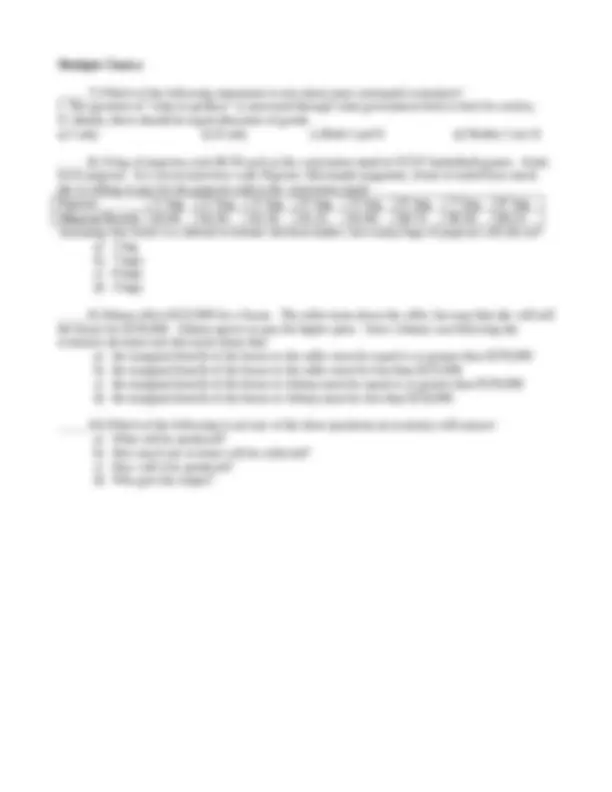



Study with the several resources on Docsity

Earn points by helping other students or get them with a premium plan


Prepare for your exams
Study with the several resources on Docsity

Earn points to download
Earn points by helping other students or get them with a premium plan
Community
Ask the community for help and clear up your study doubts
Discover the best universities in your country according to Docsity users
Free resources
Download our free guides on studying techniques, anxiety management strategies, and thesis advice from Docsity tutors
Material Type: Quiz; Professor: Clark; Class: Economics and Society; Subject: Economics; University: Georgia College & State University; Term: Unknown 1989;
Typology: Quizzes
1 / 2

This page cannot be seen from the preview
Don't miss anything!


Quiz 2 True/False (1 point each): ___1) Command economies are a feasible choice because individuals in a command economy who work hard earn the same amount of income as their lazy counterparts. ___2) In a pure command economy privately owned firms will produce whatever the government tells them to produce. ___3) The statement, "The sky is green," is a normative statement. ___4) The article “Does Abortion Lower the Crime Rate?” describes a study that attempted to determine if the legalization of abortion and the subsequent rise in abortion rates contributed significantly to the drop in crime rates that occurred in the 1990’s. ___5) The following is a positive statement from the article “Does Abortion Lower the Crime Rate?”: “The effect on crime, even if confirmed by further study, would probably not moderate the views of pro-lifers, who view abortion as murder.” ___6) Universal healthcare (as we defined it in class) is a command solution to a market problem.
Multiple Choice: _____7) Which of the following statements is true about pure command economies? I. The question of “what to produce” is answered through what government feels is best for society. II. Ideally, there should be equal allocation of goods. a) I only b) II only c) Both I and II d) Neither I nor II _____8) A bag of popcorn costs $0.50 each at the concession stand at GCSU basketball games. Jessie loves popcorn. In a recent interview with Popcorn Aficionado magazine, Jessie revealed how much she is willing to pay for the popcorn sold at the concession stand: Popcorn 1 st^ bag 2 nd^ bag 3 rd^ bag 4 th^ bag 5 th^ bag 6 th^ bag 7 th^ bag 8 th^ bag Marginal Benefit $3.00 $2.50 $1.50 $1.25 $1.00 $0.75 $0.50 $0. Assuming that Jessie is a rational economic decision-maker, how many bags of popcorn will she eat? a) 1 bag b) 7 bags c) 8 bags d) 3 bags _____9) Johnny offers $125,000 for a house. The seller turns down the offer, but says that she will sell the house for $150,000. Johnny agrees to pay the higher price. Since Johnny was following the economic decision rule this must mean that: a) the marginal benefit of the house to the seller must be equal to or greater than $150, b) the marginal benefit of the house to the seller must be less than $125, c) the marginal benefit of the house to Johnny must be equal to or greater than $150, d) the marginal benefit of the house to Johnny must be less than $150, _____10) Which of the following is not one of the three questions an economy will answer: a) What will be produced? b) How much tax revenue will be collected? c) How will it be produced? d) Who gets the output?